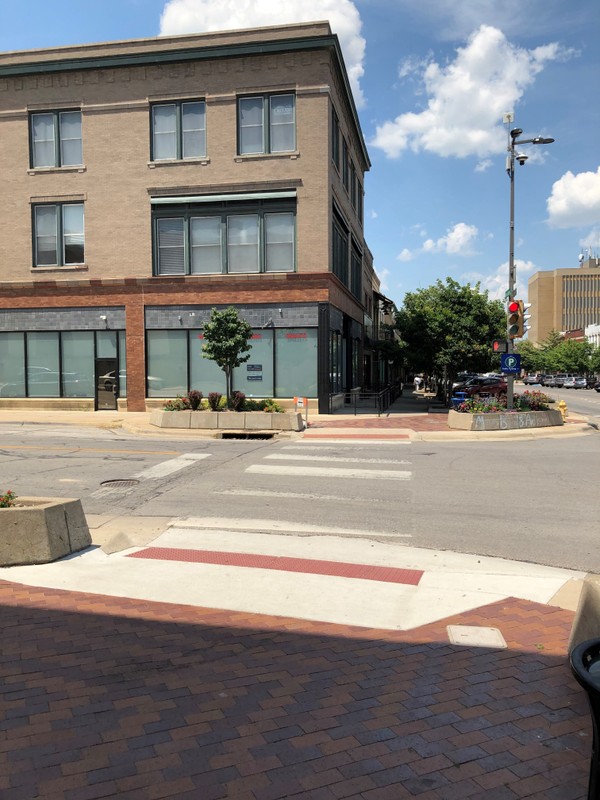Black Recruits Camp
Introduction
Text-to-speech Audio
On this corner stood a small encampment of African American men who were recruits for the 2nd Kansas Colored Infantry Regiment. As Quantrill's raiders entered Lawrence, the twenty or so Black recruits heard gunfire and horses' hooves and knew they were in grave danger as they saw between 400 and 450 mounted raiders. The men immediately fled to a willow grove two miles down the river, where they hid with other African Americans until the raiders left Lawrence. "As I stood looking some three or four negroes from the camp, which was some forty rods from where I stood, came rushing by, hallooing 'The Secesh [secessionists] have come!" -- Erastus D. Ladd, raid survivor.
Images

Backstory and Context
Text-to-speech Audio
William Quantril, an officer commissioned by the Confederacy in 1861 to form and lead guerilla troops, led a devastating and deadly raid on Lawrence on August 21, 1863. Lawrence had enjoyed a reputation for being a hub of abolitionism and a home to fugitive and newly freed slaves. Moreover, prominent men led raids on Missouri towns, which included plundering (and taking freed slaves back to Lawrence). Quantrill and several hundred men arrived in the early morning and, by the time they had left, had burned much of town to the ground and killed at least 150 men and teenage boys, roughly one-quarter of the male population older than fifteen.
Two of Quantrill's targets involved two groups of soldiers staying in Lawrence, including a Black regiment. Both collections of soldiers stayed in unprotected camps as they awaited orders to join their respective units on the front lines. Little did they know they would be thrust into action when Quantrill and his men lay siege on Lawrence. The twenty-two Caucasian soldiers with the Fourteenth Kansas Jayhawker Regiment were assembled on the east side of Massachusetts Street on Lawrence's southeast side, while an additional twenty African American soldiers serving with the Second Kansas Colored Infantry camped a bit further south on the corner of 10th and Massachusetts.
At dawn, Quantrill and his men invaded Lawrence with a plan to kill any man or teenage boy old enough to carry a gun. One focus of Quantrill's raid included the Second Kansas Colored Infantry commander, Samuel S. Snyder, who had led various troops into Missouri to raid their towns in the years before Quantrill came to Lawrence. Snyder persuaded enslaved people to leave farms and plantations, carrying as much plunder from their former enslavers as possible, including livestock, horses, carriages, and wagons.
The gunshots and screaming awakened the African American soldiers who were vastly outnumbered but able to flee. A historical marker at the parking garage at 933 New Hampshire designates the location of a small group of white recruits who were less fortunate. Although some of these young men were only teenagers, Quantrill's raiders killed seventeen of the twenty-one white recruits who had been camped at that location. bushwhackers chased them to the river, where they drowned or were killed by gunfire.
Sources
Cheatham, Gary. "Desperate Characters: The Development and Impact of the Confederate Guerrillas in Kansas." Kansas History 14 (Autumn 1991): 144–162. https://www.kshs.org/publicat/history/1991autumn_cheatham.pdf.
Epps, Kristen. "Quantrill's Raid on Lawrence" Civil War on the Western Border: The Missouri-Kansas Conflict, 1854-1865. The Kansas City Public Library. Accessed February 24, 2024. https://civilwaronthewesternborder.org/encyclopedia/quantrills-raid-lawrence.
Lawhorn, Chad. "150 years later, Quantrill's Raid remains personal." The Topeka Capital-Journal. cjonline.com. August 25, 2013. https://www.cjonline.com/story/news/politics/state/2013/08/26/150-years-later-quantrills-raid-remains-personal/16386989007/.
Ranker, Luke. "A bloody predawn raid shaped Lawrence's history." Lawrence-Journal Record. August 18, 2013. https://www2.ljworld.com/news/2013/aug/18/bloody-predawn-raid-shaped-lawrences-history/.
